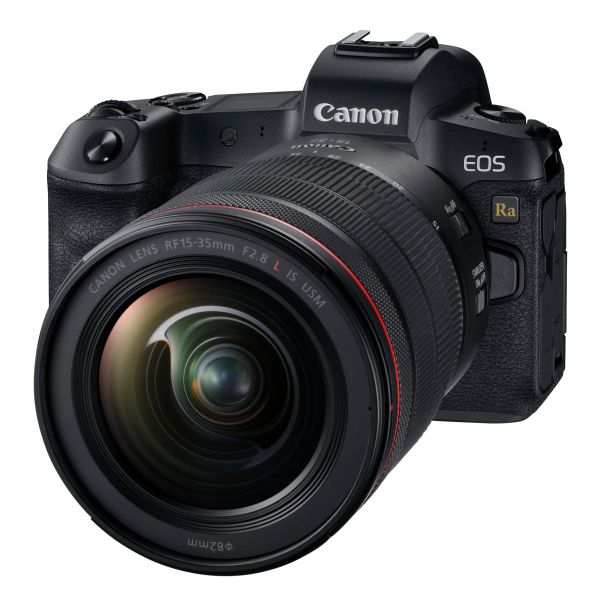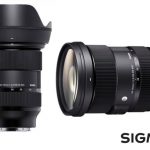Shoot for the stars – Canon expands its full frame range with an astrophotography camera
Canon, world leader in imaging solutions, today builds on its iconic and uncompromising full frame range and EOS R System line-up with the launch of the EOS Ra – the manufacturer’s first full frame camera for astronomical photography.

The EOS Ra stands unique in the market – unlike other full frame astro cameras, it is portable and has no need for external power and connection to a computer, resulting in exceptional image quality of visible reality but also of deep space photography with a wide range of optical devices.
The camera shares features with the September 2018-launched EOS R. The EOS Ra inherits the camera’s fast autofocus, the ability to focus in light conditions as low as -6EVi, a 35mm full frame CMOS sensor with approximately 30.3 million effective pixelsii and a DIGIC 8 image processor. While boasting this advanced and cutting-edge optical technology, the EOS Ra is a modified EOS model – developed in direct response to the specific needs of astrophotographers looking to capture the unique colour of deep space and constellations.
Featuring a new infrared blocking filter (IR filter) allowing even higher hydrogen alpha (Hα) light to reach the imaging sensor, it enables four times as much of this hydrogen alpha light to be transmitted compared to the EOS R. Photographers can effortlessly capture, both crisply and clearly, the distinct red colour of nebula – an interstellar cloud of dust made up mostly of hydrogen and helium – impossible to capture on a traditional camera where the UV/IR cut filters block the IR light that gives these nebulae their red colour.
Out of this world optical excellence
With its mirrorless design and full frame sensor, the EOS Ra is an ideal camera choice for photographers looking to capture stunning images of deep space. With no mechanical mirror system, vibrations are minimised ensuring sharp images. What’s more – the high performing Canon-developed sensor offers a mix of high ISO performance, impressive resolution, fast readout and exposure latitude, ensuring interstellar images are of unprecedented quality. As with all of its products, Canon’s heritage in optical excellence runs true in the EOS Ra – unlike some cameras with non-Canon-developed sensors – all 30.3 million of the camera’s pixels are used – meaning no pixels are missed which could result in areas not being captured and stars lost. However, should a connected telescope eyepiece not cover the full image area of the sensor, the EOS Ra also allows the image area to be cropped to an APS-C area of approx. 11.6 MP (4176×2784) or several other crop ratios.
Sky-high shooting possibilities
With Dual Pixel CMOS Auto Focus (AF), the EOS Ra features a range of AF and MF focus functions ensuring images are of unparalleled optical excellence – including shots captured in low-light conditions. Retaining the -6EV AF from the EOS R, low-light performance with RF lenses and existing EF lenses is possible. When astrophotographers use it with a telescope, focus assist functions like focus peaking and magnification up to 30x – that’s three times more than the EOS R – ensure focusing with any optical device is simple and quick. What’s more, with its 4K movie and 4K time-lapse capabilities the EOS Ra is also the first astro camera on the market with a 4K movie function.
Whatever the scenario, there’s a lens for it
Sharing the same mount as the EOS R, the EOS Ra has been designed to maximise lens design possibilities. The RF lens mount enables a radical new optical design – the 20mm flange back and wide 54mm mount diameter has made it possible for Canon engineers to design new lenses that weren’t achievable before. The camera, and system is also compatible with three lens mount adapters, giving photographers a wide choice of lenses and telescopesiii to use with EOS Ra. More than 70 EF and EF-S lensesiv can be used with Canon’s innovative EOS R System, adding new functionality to existing optics, while maintaining the excellent levels of performance and functionality previously seen with EOS DSLRsv. As when attached to an EOS R, the Canon mount adapter enables users to maintain their setup whether using RF or EF and EF-S mount lenses.
Capturing constellations with comfort and ease
The EOS Ra’s compact and lightweight design makes it easier to attach to a telescope – perfect for photographers shooting for long periods of time. Combining existing EOS ergonomics with new controls the camera provides maximum control with familiarity. The Vari-Angle touch screen makes the camera comfortable for photographers shooting in any position with the benefit of having up to 30x magnification to check focus. The EOS Ra’s electronic viewfinder means photographers can really shoot what they see, with the ability to view their subjects clearly in the dark.
The EOS Ra, like the EOS R, supports connection via EOS Utility and the Canon Camera Connect application. This allows remote camera control for still and video via USB or via wireless. The software can be downloaded free of charge from the Canon support website – enabling remote shooting, for example from indoors on a cold evening, and time lapse operation. The camera’s Bluetooth and Wi-Fi capabilities make connection to a smartphone and transferring of images and video simple. In addition to this, accurate GPS data from your smartphone can be added to images for extra clarity of their capture location.
Pricing and Availability
The EOS Ra will be on sale in early December, with the following RSPs:
EOS Ra: £2599.99 / €3019.99
For more information on the EOS Ra, please visit: https://www.canon.co.uk/cameras/eos-ra/
EOS Ra Key Features
- Infrared blocking filter (IR filter) array, for higher hydrogen alpha (Hα) light transparency to the imaging sensor, enabling four times as much hydrogen alpha light to be transmitted compared to the EOS R
- Optically excellent image capture thanks to its 35mm full frame CMOS sensor with approximately 30.3 million effective pixels, the latest DIGIC 8 image processor and compatibility with high-performance RF lenses
- Enhanced communication and power transmission between the lens and camera body
- Lightweight mirrorless design reducing shake when attached to a telescope
- Low-light capabilities
- Vari-Angle screen
- 4K video delivery with output in 10-bit over HDMI










